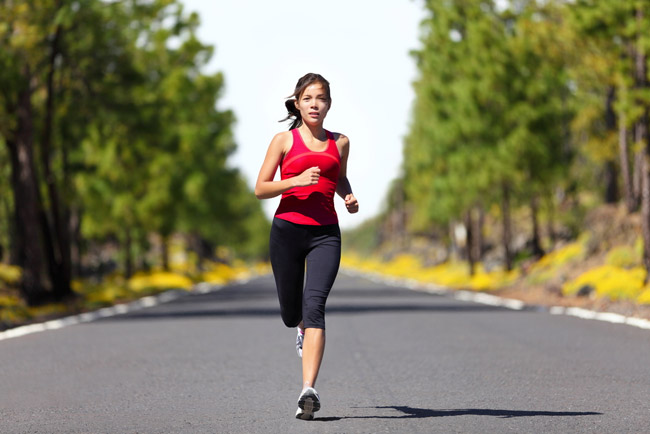
Spanish researchers have analysed the effect of endurance running training on the stiffness index, a variable that is directly related to bone quality. The results confirm that the greater the race distance that is trained, the better; this can be used, therefore, to prevent the progressive decline in bone mineral density that occurs with age.
In healthy individuals, bone quality -chiefly determined by bone mineral density- depends on factors such as sex, age, race and diet. It can be modified, however, by making life style changes -for instance by doing regular exercise. A new study, led by researchers from Camilo José Cela University (UCJC), determines how training to compete in endurance races (from 10 km to marathons) can modify the mechanical properties of the calcaneus, a bone in the foot that forms the heel.
The changes in the mechanical properties of the bone were measured using the stiffness or rigidity index, a variable that is directly related to the bone density of the calcaneus. The results were recently published in the European Journal of Applied Physiology.
During the study, bone densitometries -or bone density tests- were performed on both the right and left feet of 122 marathon runners and 81 half marathon and 10km runners, and their values were compared to those of a control group of sedentary individuals of a similar age.
“The results showed that the endurance runners had a greater stiffness index than the sedentary individuals,” as explained by Beatriz Lara, the main author of the study and a member of the Exercise Physiology Laboratory at UCJC. The improved stiffness index was observed in both the male and female runners.
“It was also possible to confirm a dose-response relationship, meaning that greater amounts of training correspond to a greater improvement in the mineral density of the calcaneus,” adds Lara.
The scientists assert that training for endurance races is effective in producing physical changes in the physical properties of the calcaneus; hence, this can be used to prevent the progressive decline in bone mineral quality that occurs with age.
How to improve bones
Beneficial changes in bone mineral quality can be induced using mechanical stimuli related to the load that the bones bear. Exercise modalities that require greater muscular forces (weight-bearing exercise) or high impacts (such as jumping) are the best activities for increasing bone mineral density.
“Sports such as swimming or skating, in which body weight or impact loading are reduced, do not generate high osteogenic benefits,” emphasises Lara. “Nevertheless, the effect that endurance running training may have on our bones is not yet known -while it does not entail high impacts, it does require running long distances.”